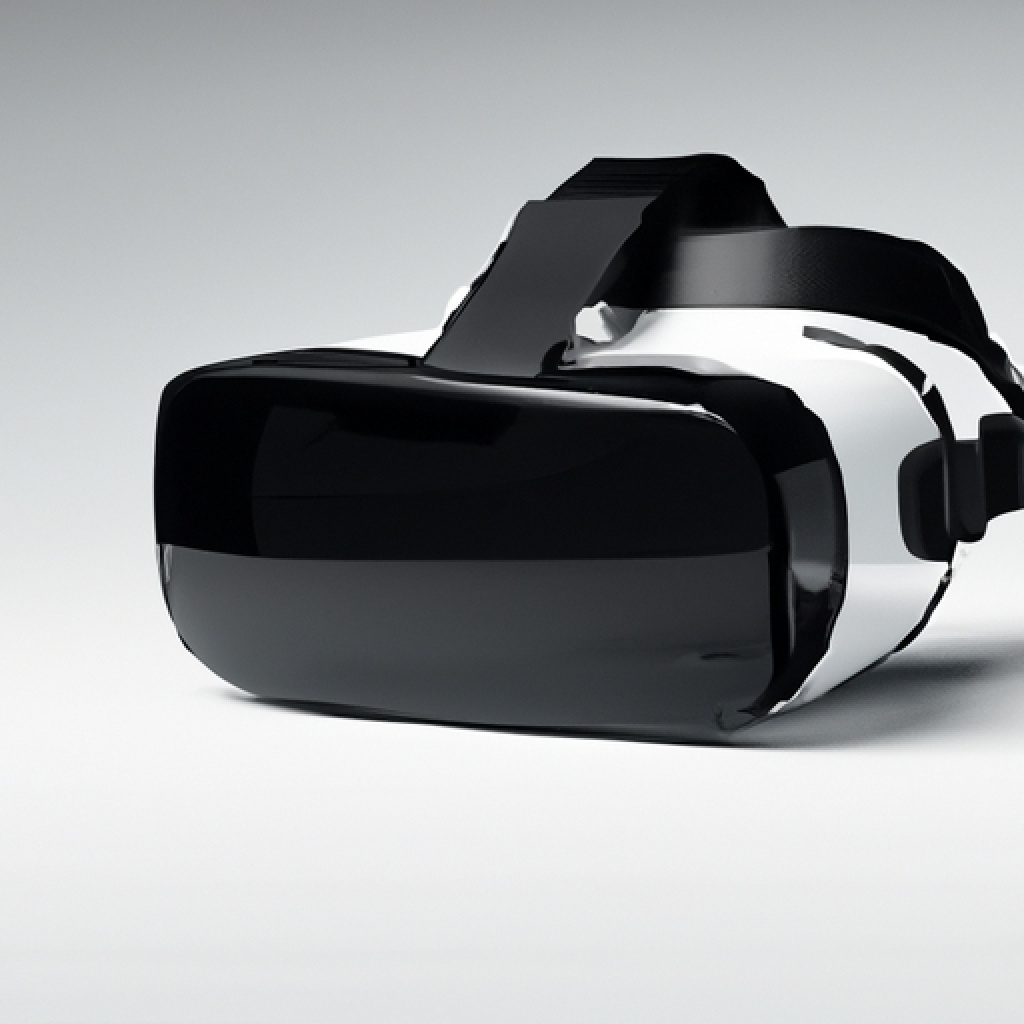Why Is VR So Expensive Now?

I’ve always been curious about virtual reality (VR) and why it comes with such a hefty price tag. It seems like every new VR headset or system that hits the market is accompanied by a high price point, leaving many of us wondering, “Why is VR so expensive now?” It’s a question that has been on the minds of tech enthusiasts and gamers alike, as they weigh the cost versus the immersive experience that VR promises to deliver. In this article, I aim to explore some of the key factors driving up the cost of VR and shed light on why this cutting-edge technology remains out of reach for many.
Understanding the Basics of VR
What is VR?
Virtual Reality, commonly known as VR, is a technology that provides users with a simulated and immersive experience, allowing them to interact with a virtual environment using specialized equipment and software. By wearing a VR headset, users are transported to a virtual world that appears and feels incredibly realistic, enabling them to engage with the surroundings as if they were there in person.
Importance of virtual reality
VR has gained significant importance in various industries due to its potential to revolutionize the way we experience and interact with digital content. It offers endless possibilities in areas such as gaming, education, healthcare, training, architecture, and entertainment. By providing a sense of presence and immersion, VR has the power to enhance learning, entertain, and even provide therapeutic benefits.
Current use of VR in various sectors
VR technology is finding applications in numerous industries. In gaming, it allows players to step inside the game, making the experience more captivating and lifelike. Educational institutions are utilizing VR to create immersive learning environments, enabling students to explore historical events, travel to different countries, or even dissect virtual organs. Healthcare professionals are using VR to simulate surgeries, train medical students, and treat phobias and anxiety disorders. Architects and designers are employing VR to visualize and experience their creations before they are built. The entertainment industry is also leveraging VR to provide viewers with a more immersive and engaging cinematic experience.
The Components of a VR System
VR Headset
The VR headset is the primary device that enables users to experience virtual reality. It consists of a head-mounted display (HMD) that covers the eyes and displays the virtual environment. The headset must be comfortable, lightweight, and offer a high-resolution display to ensure a realistic and comfortable experience for the user. Some popular VR headset brands include Oculus Rift, HTC Vive, and PlayStation VR.
Tracking system
The tracking system is an essential component of VR that accurately tracks the user’s head movements and position within the virtual environment. It allows users to look around and move within the virtual space, making the experience more immersive and interactive. The tracking systems can utilize various technologies such as external sensors, cameras, or infrared lights to capture the user’s movements accurately.
VR controllers
VR controllers are handheld devices that enable users to interact with the virtual environment. They have buttons, triggers, and joysticks that allow users to manipulate objects, navigate menus, and perform actions within the VR space. The controllers must provide precise tracking and haptic feedback to deliver a realistic and responsive experience.
High-performance computer or console
To run VR applications smoothly and render high-quality graphics, a powerful computer or gaming console is required. VR demands a significant amount of computing power to deliver a lag-free and immersive experience. This includes a high-performance processor, ample RAM, a powerful graphics card, and sufficient storage space. Without a capable computer or console, the VR experience may not be optimal.

Technologies Involved in VR Development
Immersion technology
The main goal of VR is to provide a sense of immersion, making users feel like they are truly present in the virtual world. Immersion technology comprises various elements such as realistic graphics, surround sound, and haptic feedback. By combining these elements, VR simulates the user’s physical presence and enhances their sensory perception, leading to a more believable and engaging experience.
Simulation technology
Simulation technology is crucial in VR development as it allows the realistic recreation of physical and virtual environments. It includes advanced algorithms, physics engines, and motion tracking technologies that accurately simulate the behavior and interaction of virtual objects. This technology ensures that users can interact with the virtual world in a natural and intuitive manner, enhancing the overall immersion and realism of the experience.
Interactive technology
Interactivity is a key aspect of VR, enabling users to engage and interact with the virtual environment. Interactive technology involves software frameworks, programming languages, and APIs that allow developers to create interactive experiences. It includes features like real-time movement tracking, gesture recognition, and object manipulation, enabling users to have a hands-on and responsive experience within the virtual space.
Impact of Technology Development Costs on VR Price
Cost of R&D
The development of VR technology involves extensive research and development, leading to high costs. Companies invest significant resources in designing and improving VR hardware and software, conducting trials, and resolving technical challenges. The substantial R&D costs are often a significant factor contributing to the higher price of VR devices.
Use of advanced technology and materials
VR devices incorporate advanced technologies and cutting-edge materials to deliver a seamless and immersive experience. The use of high-resolution displays, complex tracking systems, and responsive controllers requires the integration of expensive components. The material cost associated with building high-quality VR devices further adds to the overall price.
Frequent updates and improvements
As technology evolves rapidly, VR manufacturers regularly release updates and improvements to enhance the functionality and performance of their devices. These updates involve additional costs for research, development, and implementation. Consequently, consumers may experience higher prices due to the continuous investment required to keep up with the latest advancements.

Brand Influence on VR Pricing
Reputation and reliability of VR brands
Reputation and reliability play a significant role in the pricing of VR devices. Established brands with a strong track record of delivering high-quality products often have a higher price tag. Consumers are willing to pay a premium for brands they trust, as they offer a sense of reliability, customer support, and a proven track record of delivering satisfactory experiences.
Pricing strategy of leading VR manufacturers
Leading VR manufacturers strategically price their devices based on various factors, including production costs, market positioning, and competition. They carefully analyze market demands, consumer preferences, and the perceived value of their products, determining a price that ensures profitability while still being competitive in the market. Moreover, premium features and additional bundled content may justify a higher price point.
Brand competition and their impact on prices
Competition among VR brands significantly impacts pricing. Intense competition motivates manufacturers to keep prices competitive, leading to more affordable options for consumers. However, the introduction of new features, performance advancements, and brand recognition can also result in higher prices as companies strive to differentiate themselves and capture a larger share of the market.
Production and Manufacturing Costs of VR
Production costs linked with VR
The production process of VR devices involves multiple steps, including design, prototyping, testing, assembly, and quality control. Each stage incurs costs, starting from the initial research and development phase to the final manufacturing. Additionally, facilities, equipment, and skilled labor are necessary to ensure the efficient production of high-quality VR devices.
Material costs
The materials used in the manufacturing of VR devices also contribute to their overall price. High-resolution displays, advanced sensors, precision-engineered plastics, and durable yet lightweight materials are essential components, all of which come at a cost. The use of high-quality materials ensures a superior VR experience but can drive up the price of the end product.
Labor costs
Labor costs, including wages and benefits, are a significant factor contributing to the price of VR devices. Skilled workers are required throughout the production process, from design and engineering to assembly and quality control. The cost of employing a skilled workforce plays a crucial role in determining the final price of VR devices.
Logistics and transportation costs
The logistics involved in transporting and distributing VR devices also add to the overall cost. Raw materials, components, and finished products need to be efficiently transported from various locations, often involving multiple intermediaries. The cost of logistics, including shipping, warehousing, and distribution, ultimately affects the final price that consumers pay for VR devices.

Impact of Supply and Demand on VR Prices
Sales volume and market demand
The demand for VR devices has a significant impact on their prices. Higher demand and sales volume usually lead to economies of scale, reducing production costs and potentially lowering prices. Conversely, if demand is lower than anticipated, manufacturers may adjust prices accordingly to ensure profitability.
Scarcity and exclusivity of VR
The scarcity and exclusivity of certain VR models or features can affect pricing. Limited edition or highly sought-after VR devices create a sense of rarity and exclusivity, allowing manufacturers to set higher prices due to their perceived higher value. This strategy targets consumers who are willing to pay a premium for unique features or limited availability.
Customer’s willingness to pay high price
Ultimately, the price of VR devices is influenced by consumers’ willingness to pay. If consumers perceive the VR experience as highly valuable and are willing to invest in the technology, manufacturers can charge a higher price. Factors such as the perceived quality, brand reputation, and the overall benefits of VR contribute to the customers’ willingness to pay a premium.
Future Trends in VR Pricing
Expectation of price drop as technology matures
As with any emerging technology, VR is expected to follow the typical adoption cycle, where prices tend to decrease as the technology matures and becomes more accessible. As VR hardware improves, production costs are likely to decrease, allowing for more competitive pricing. This trend can potentially make VR more affordable for a broader range of consumers.
Potential impact of emerging competitors
The entry of new competitors into the VR market can lead to increased competition and potentially lower prices. As more companies develop VR devices, the market becomes more saturated, intensifying the competition for consumers. This increased competition can drive down prices as manufacturers strive to gain market share and attract customers with competitive pricing.
Effect of mass production on price reduction
Mass production has the potential to significantly impact VR pricing. As manufacturing processes become more streamlined and efficient, companies can produce VR devices at a lower cost per unit. The economies of scale achieved through mass production can lead to price reduction, making VR more accessible to a larger customer base.

Tips to Buy VR at a Reasonable Price
Waiting for sales and discounts
One way to obtain a VR device at a more reasonable price is to wait for sales and discounts. Throughout the year, manufacturers often offer promotions and discounts, particularly during holiday seasons and special occasions. By being patient and keeping an eye on these sales, consumers can take advantage of reduced prices and potentially save a significant amount of money.
Opting for less popular brands
Choosing less popular brands can also be a way to acquire a VR device at a more affordable price. While lesser-known brands may not have the same brand recognition as industry leaders, they can still provide comparable features and quality at a lower price point. Researching and considering alternative brands can help consumers find hidden gems that offer excellent value for their money.
Choosing a basic VR model
Another option to save money on VR devices is to opt for a basic model rather than going for the latest and most advanced options. Basic VR models can still provide an immersive experience and cater to the needs of most users without the added cost of premium features. By determining their priorities and identifying the essential features, consumers can choose a VR device that meets their requirements while staying within their budget.
Final Thoughts on High VR Prices
Summary of factors contributing to high VR prices
Several factors contribute to the high prices of VR devices. These include the extensive research and development costs, the use of advanced technology and materials, frequent updates and improvements, brand reputation and pricing strategies, production and manufacturing costs, and the impact of supply and demand.
Possibility of future price changes
While VR currently carries a premium price tag, there is a strong possibility of future price changes. As technology continues to evolve, production costs decrease, and competition intensifies, VR prices are expected to become more affordable, enabling a wider audience to explore the immersive world of virtual reality.
Impact of high cost on VR adoption and usage
The high cost of VR devices can potentially limit adoption and usage rates. Not everyone can afford the luxury of owning a VR headset, inhibiting widespread access to this transformative technology. However, as prices gradually decrease, VR adoption is likely to increase, leading to a broader range of applications and enriching experiences for users across various sectors.
In conclusion, while VR may seem expensive in the present, it bears great potential for transforming industries and providing unparalleled experiences. By understanding the factors that contribute to high VR prices, keeping an eye on market trends, and exploring cost-saving options, consumers can make informed decisions when purchasing VR devices. With time, the cost of VR is expected to decline, enabling more individuals to immerse themselves in the wonders of virtual reality.








